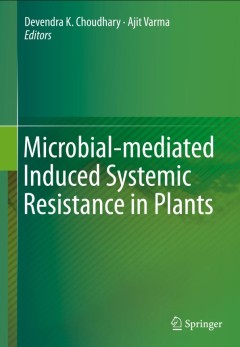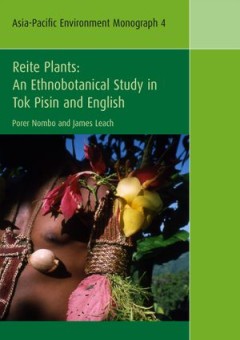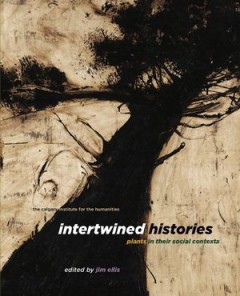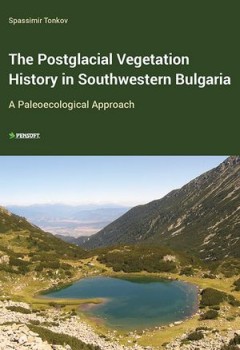Filter by

Elucidation of Abiotic Stress Signaling in Plants Functional Genomics Perspe…
Abiotic stresses such as high temperature, low-temperature, drought, and salinity limit crop productivity worldwide. Understanding plant responses to these stresses is essential for rational engineering of crop plants. In Arabidopsis, the signal transduction pathways for abiotic stresses, light, several phytohormones and pathogenesis have been elucidated. A significant portion of plant genomes …
- Edition
- 1
- ISBN/ISSN
- 978-1-4939-2540-7
- Collation
- 1 b/w illustrations, 26 illustrations in colour
- Series Title
- -
- Call Number
- -

Elucidation of Abiotic Stress Signaling in Plants Functional Genomics Perspe…
Abiotic stresses such as high temperature, low-temperature, drought, and salinity limit crop productivity worldwide. Understanding plant responses to these stresses is essential for rational engineering of crop plants. In Arabidopsis, the signal transduction pathways for abiotic stresses, light, several phytohormones and pathogenesis have been elucidated. A significant portion of plant genom…
- Edition
- 1
- ISBN/ISSN
- 978-1-4939-2211-6
- Collation
- 6 b/w illustrations, 29 illustrations in colour
- Series Title
- -
- Call Number
- -

The Science of Reconstructive Transplantation
This volume presents a comprehensive overview of the latest advances in basic and translational research in the field of reconstructive transplantation and its potential therapeutic implications. Dr. Thomas E. Starzl and Dr. Raimund Margreiter, both pioneers in the field of transplantation, have written the foreword for the book. The volume spans such topics as skin rejection, immune monitor…
- Edition
- -
- ISBN/ISSN
- 978-1-4939-2071-6
- Collation
- -
- Series Title
- -
- Call Number
- -

Microbial-mediated Induced Systemic Resistance in Plants
With a focus on food safety, this book highlights the importance of microbes in sustainable agriculture. Plants, sessile organisms that are considered as primary producers in the ecosystem and communicate with above- and below-ground communities that consist of microbes, insects, and other vertebrate and invertebrate animals, are subjected to various kinds of stress. Broadly speaking, these can…
- Edition
- 1
- ISBN/ISSN
- 978-981-10-0387-5
- Collation
- X, 226
- Series Title
- -
- Call Number
- -

Medicinal Plants of Northern Thailand for the Treatment of Cognitive Impairme…
This book provides a description of cognitive impairment in the elderly population through the lens of Thai Traditional Medicine as it is practiced in northern Thailand. It provides an overview of Thai Traditional Medicine and the memory loss presented in elderly dementia. Some medicinal plants used by traditional Thai healers to treat cognitive decline and memory issues in the elderly are revi…
- Edition
- 1
- ISBN/ISSN
- 978-3-319-10240-5
- Collation
- XI, 84
- Series Title
- Series Title SpringerBriefs in Plant Science
- Call Number
- -

Tracheal Transplantation : Current Possibilities
The trachea is one of the most fascinating organs in the human body. At first sight, it may appear to be a simple tube for air transport to and from the lungs. However, the cartilaginous framework of this airway, combined with its ultrathin mucosal lining and rich, but difficult to handle, blood supply, makes it to one of the most challenging tuberous organs to repair and transplant. In 2011…
- Edition
- -
- ISBN/ISSN
- 9789461662965
- Collation
- -
- Series Title
- -
- Call Number
- -

Reite Plants An Ethnobotanical Study in Tok Pisin and English
Reite Plants is a documentation and discussion of the uses of plants by speakers of the Nekgini language, a people who reside in the hinterland of the Rai Coast in northern Papua New Guinea. High quality images and detailed information about traditional customary practices using plants provide a unique entry into understanding Nekgini social and cultural life. The book contains a discussion of …
- Edition
- -
- ISBN/ISSN
- 9781921666018
- Collation
- -
- Series Title
- -
- Call Number
- -

Intertwined Histories Plants in Their Social Contexts
How do we understand the boundaries of individual creatures? What are the systems of interdependency that bind all living creatures together? Plants were among the the first to colonize the planet. They created the soil and the atmosphere that made life possible for animals. They are some of the largest and oldest life forms on Earth. In spite of their primacy, Western cultures have traditional…
- Edition
- -
- ISBN/ISSN
- 9781773850917
- Collation
- -
- Series Title
- -
- Call Number
- -

The Postglacial Vegetation History in Southwestern Bulgaria
This book presents the results from the palynological and paleoecological studies conducted with my participation in Southwestern Bulgaria during the period 1985-2020. The study area has always played a key role in the investigation of the Late Quaternary vegetation history in Bulgaria since the middle of the past century. With the development of the research methods (pollen analysis, determina…
- Edition
- -
- ISBN/ISSN
- 9786192480448
- Collation
- -
- Series Title
- -
- Call Number
- -

Flora Malesiana. Series I - Seed Plants, Volume 14. Myristicaceae
Flora Malesiana. Series I - Seed Plants, Volume 14. Myristicaceae
- Edition
- -
- ISBN/ISSN
- 9789546427311
- Collation
- -
- Series Title
- -
- Call Number
- -
 Computer Science, Information & General Works
Computer Science, Information & General Works  Philosophy & Psychology
Philosophy & Psychology  Religion
Religion  Social Sciences
Social Sciences  Language
Language  Pure Science
Pure Science  Applied Sciences
Applied Sciences  Art & Recreation
Art & Recreation  Literature
Literature  History & Geography
History & Geography